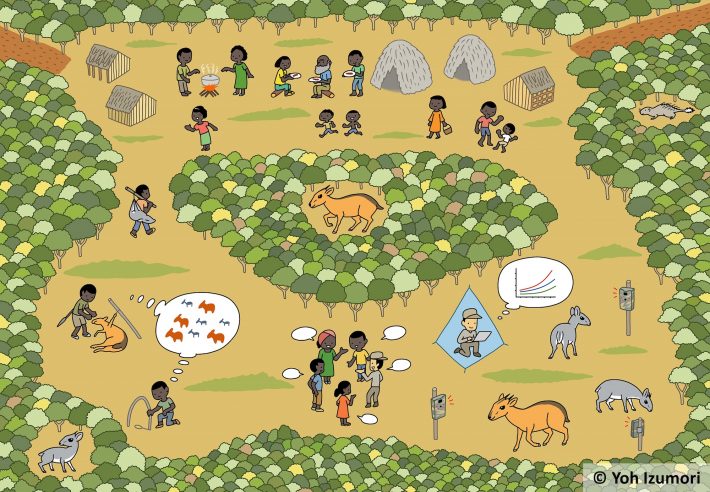Cameras candidly capture bushmeat mammals to avert crisis
Kyoto University Global Communications press release.
New research published in the Journal of Applied Ecology looks for the best indicators for sustainable hunting in the African rainforest.

Bushmeat is not a vegan term but a commodity in crisis. With the decline of wildlife due to commercial overexploitation in the world’s tropical rainforests, the bushmeat crisis is impacting biodiversity and the livelihoods of local populations.
While participatory wildlife monitoring by local people can be a solution, the challenge has been in finding indicators – biostatistical information – that accurately and easily estimates the total biomass of mammals targeted for bushmeat hunting.
Projet Coméca, consisting of a team of researchers from Kyoto University and Cameroon, has conducted camera trap surveys in the rainforests of southeast Cameroon to predict the total biomass of large rodents and duikers, the African forest ungulates.
Other tropical areas may also be able to apply similar indicators for their local wildlife management
“We’re willing to work together with the locals to establish a system for monitoring bushmeat abundance by themselves, leading to sustainable wildlife management,” says lead author Shun Hongo.
After setting up camera traps at three sites in a local forest to record videos of five target mammals, the team used the random encounter and staying time model, or REST, to estimate spatial variation in each species’ population density and the total biomass.
Our indicators can be important tools for sustainable management of bushmeat hunting
The research team subsequently compared the relationships between the total biomass and six indicators, which had previously been proposed by different bushmeat researchers.
Two of these — the ratio of red duikers to blue duikers, and the ratio of all duikers to rodents — were deemed promising as they showed positive linear correlations with total bushmeat biomass.
“Our indicators can be important tools for sustainable management of bushmeat hunting,” the author adds.
“Since forest ungulates and large rodents are widely distributed in rainforests worldwide, other tropical areas may also be able to apply similar indicators for their local wildlife management.”
You can access the full research article here:
https://besjournals.onlinelibrary.wiley.com/doi/10.1111/1365-2664.14257
Like what we stand for?
Support our mission and help develop the next generation of ecologists by donating to the British Ecological Society.